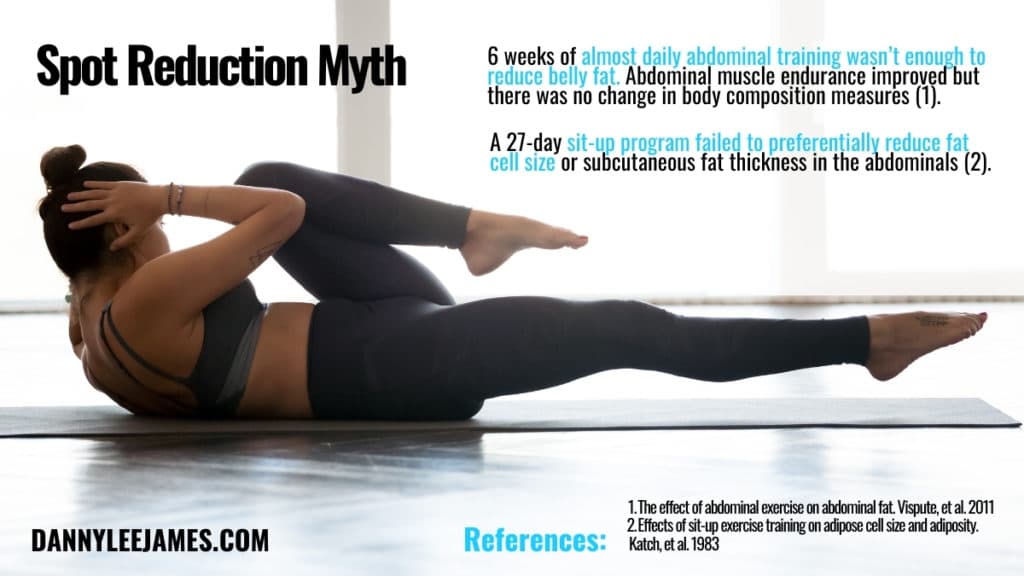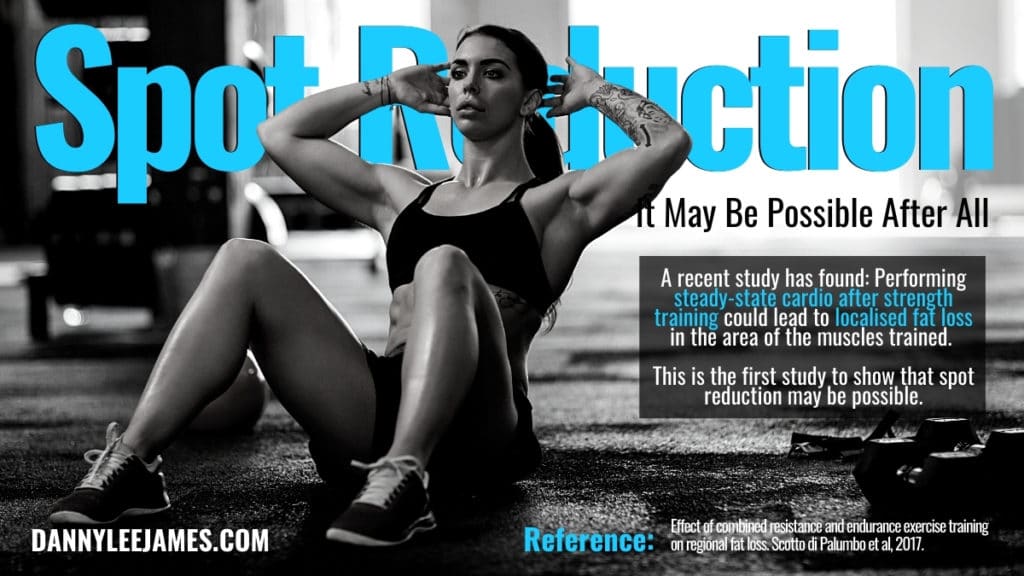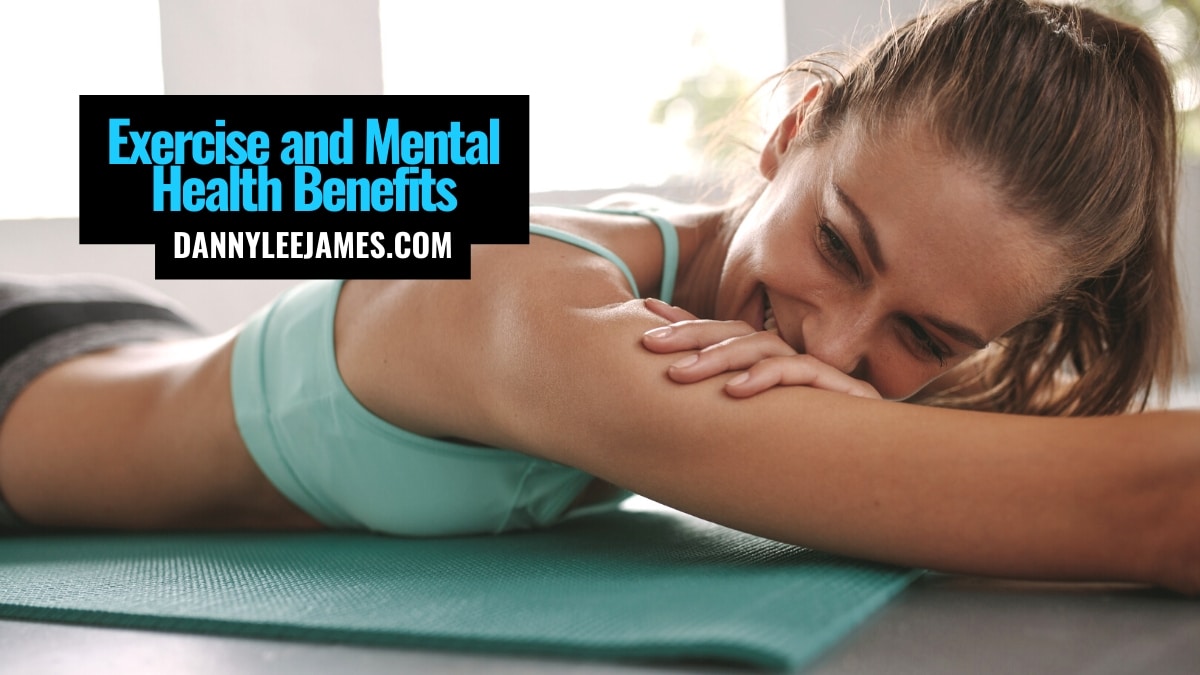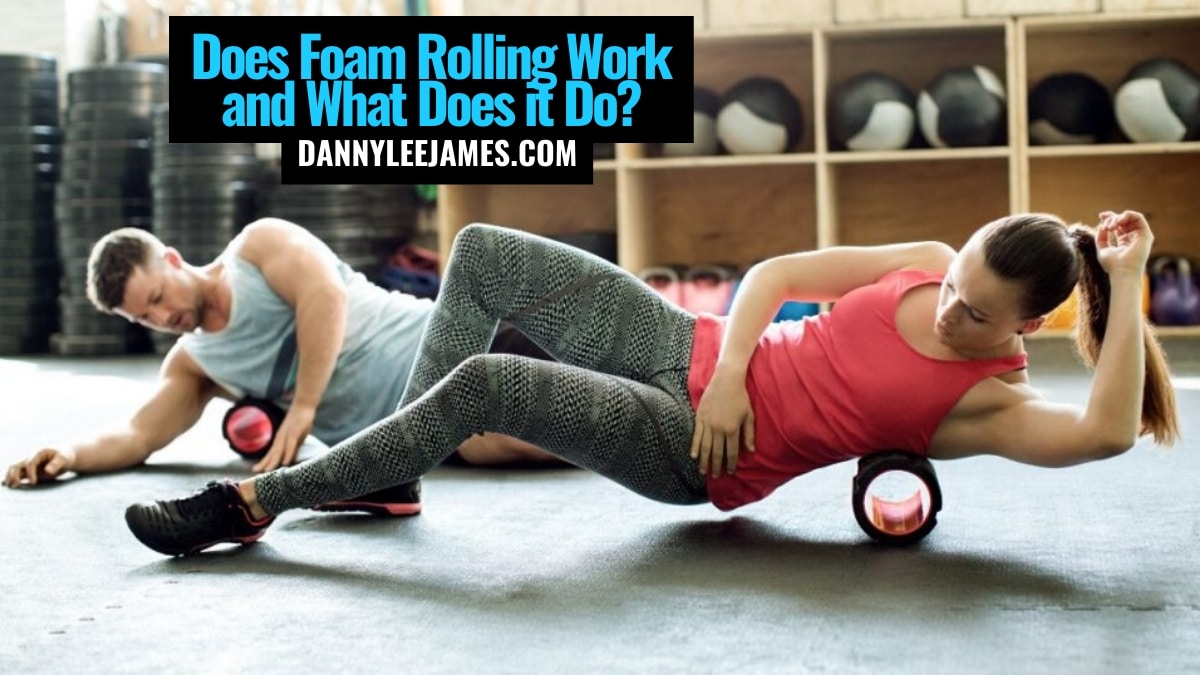Personal trainers and physique coaches have long declared spot reduction a myth. You'd be hard-pressed to observe it in the gym or find strong supporting evidence of it. Meanwhile, advertisements and social media have worked hard perpetuating the myth.
Now a recent study seems to show how under certain conditions, spot reducing may be possible after all (1).
The Skinny on Spot Reduction
Both regular exercise and nutrition management remains the chief strategy for weight control. Period. But, not all areas of fat mass on the body respond the same to exercise. There are conflicting reasons for why this may be the case. But the result is an enduring interest in site-specific fat loss.
Spot reduction is the idea you can target an area of the body or specific muscles for a more pronounced fat-burning effect.
Numerous studies have attempted to break it down without success.
One study went straight for the throat of the spot reduction myth. They showed 6 weeks of almost daily abdominal training wasn't enough to reduce belly fat. They did improve muscle endurance but there was no change in body composition measures (2).
Another found a sit-up program failed to reduce fat cell size or subcutaneous fat thickness in the abdominals to a greater extent (3).
One study found significant fat loss occurred in the upper body following a 12-week unilateral leg-press program (4).
In the study we're about to look at, the design was a little different and may have contributed to the contrasting findings.

The Study
They explored training aimed at specific areas of the body to see if it would result in localised fat loss.
16 physically inactive women participated in a 12-week training program of 3 sessions PW. There were two groups:
- UpBdResist – Upper body strength training followed by 30 mins of aerobic exercise for the lower body.
- LwBdResist – Lower body strength training followed by 30 mins aerobic exercise for the upper body.
So they matched an upper body lift with a lower-body aerobic bout and vice versa.
Strength
The strength training sessions for both groups consisted of basic machine-based exercises.
Exercises used for the upper body session were:
Chest press, low row, arm curl, deltoids machine, and triceps machine.
Exercises used in the lower body were:
Gluteus machine, seated leg curl, abductor machine, leg extension, and adductor machine.
Subjects performed each exercise for 3×10 @ 60% 1RM. They were also instructed to perform each repetition at maximum concentric velocity. Otherwise known as ‘as explosive as possible.'
It's not clear if there were any other instructions related to progression over the 12 weeks. Although increasing velocity over time is a form of progression, I doubt that was the aim here.

Endurance
The lower body endurance bout consisted of cycling. Aerobic activity for the upper body following the lower-body lift was with an arm-ergometer. That's the seated arm-cycle thingy some gyms have gathering dust in the corner.
Both endurance bouts were at 50% of VO2 max and for the same duration (30 minutes). Which ends up being quite a low-intensity form of steady-state cardio.
We know that easy aerobic activity such as this can lead to greater fat oxidation. This can be a viable option if you're trying to maximise lean muscle retention while losing fat.
Testing
They assessed regional body composition using DEXA and skin-fold measures. All participants had to maintain normal dietary and activity habits during the program. Monitoring was via food logs and activity questionnaires. Anyone straying from their usual habits found themselves expelled.
The aim was to see if regional fat loss (Aka, spot reducing) could occur with concurrent training. The hope was that a combination of exercise types aimed at different body parts might offer some fresh clues.
No studies to date have looked at this.
Results
Total body mass didn't change much after the training protocol in both groups. Both groups did see a significant reduction in total fat mass, though the results were similar.
The upper body training group lost a greater amount of fat mass from the upper limbs. Lower body training resulted in relatively more fat loss in the legs.
Total lean mass stayed the same compared with baseline for both groups as well.
The LOWER group gained a little more lean mass in the lower body compared to the upper limbs. There were no major differences between upper and lower limb muscle gains seen in the UPPER group.
Skinfold data also reflected these findings.
Possible Mechanisms
We don't have a solid understanding yet but the prevailing thought is this:
Intense exercise such as strength training increases blood flow to the working muscles. As well as, to the nearby adipose tissue. It's likely increased blood-flow mobilises fatty acids from local fat stores, ready for use as an energy source.
Now, that doesn't mean that once these fatty acids hit the bloodstream they're going to be used for fuel. They could very well return to storage if they're not oxidised through activity.
It's possible the linchpin of spot reduction success in this study was the aerobic exercise that followed the lifting. Since steady-state cardio uses mostly fat as a fuel source, it may have burned off the fatty acids mobilised by the strength session.
As happened in this study, spot reduction occurred in the areas strength-trained. And this is where this study differs from most others that have not shown a spot reducing effect:
The addition of aerobic exercise after strength training

So, Body Fat Spot Reduction Works?
These results suggest a region-focused training program could lead to localised fat loss. Fat mass reductions occurred in the area of the muscles trained.
That is, when followed by an aerobic exercise bout to maximise fat oxidation.
More research using a concurrent design would be interesting to see. Stricter testing (5,6) and a larger sample of trained, already lean participants would also be a nice addition.
Wrapping Up
This is the only study to my knowledge showing a spot reducing effect. So, I'd caution against making firm decisions based on this alone. Especially since it flies in the face of a lot of other decent research in the area.
It's possible the extra aerobic training unique to this study was the difference-maker here.
The idea being that strength training mobilised fat stores ready for use. Following that, aerobic exercise increased fat oxidation and burned them off as energy.
Keeping in mind, performing excessive amounts of cardio while dieting down may have a negative impact. It could lead to impaired training adaptions, poor performance and sub-par recovery.
I hesitate to say it's worth trying for the general public. For most people looking for weight loss, a small caloric deficit and strength training for all the major muscle groups will get you quite far.
And the effect may not be large enough to risk interference with excessive cardio.
This information may be more applicable to weight-class athletes or physique competitors. For already lean athletes trying to tap into stubborn site-specific fat stores, it might be an option.
Of course, we need more compelling research to get a clearer picture of what's possible.

References
- Effect of combined resistance and endurance exercise training on regional fat loss. Scotto di Palumbo et al, 2017.
- The effect of abdominal exercise on abdominal fat. Vispute, et al. 2011.
- Effects of sit-up exercise training on adipose cell size and adiposity. Katch, et al. 1983.
- Regional fat changes induced by localized muscle endurance resistance training. Ramirez-Campillo, et al. 2013.
- Subcutaneous fat alterations resulting from an upper-body resistance training program. Kostek, et al. 2007.
- The effect of unilateral isokinetic strength training on local adipose and muscle tissue morphology, thickness, and enzymes. Krotkiewski, et al. 1979.








[…] far as targeting a specific part of the calf, such as the gastrocnemius medial or lateral head, it is a […]
[…] we know that exercise at lower intensities burns a greater percentage of fat as fuel. This is not where this story ends, yet this is also where a lot of people plant their […]
[…] addition, one of the best ways to achieve those much-revered washboard abs is to get leaner. Most of us will find that once we burn off a tonne of fat and get down to low-double or single digit […]
[…] if the goal is weight loss or burning fat around the abdomen, would you squat or […]